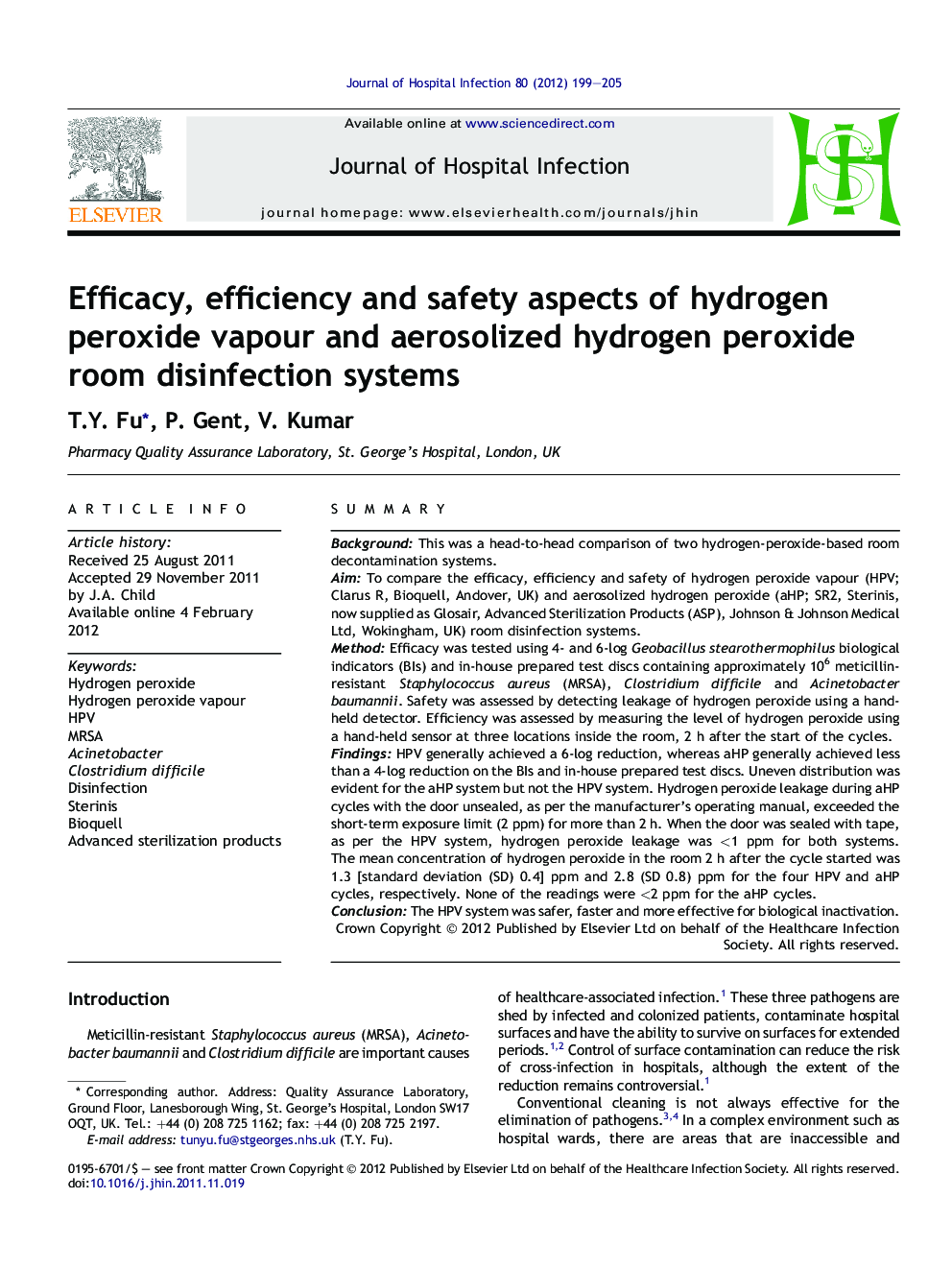| کد مقاله | کد نشریه | سال انتشار | مقاله انگلیسی | نسخه تمام متن |
|---|---|---|---|---|
| 3371997 | 1219240 | 2012 | 7 صفحه PDF | دانلود رایگان |

SummaryBackgroundThis was a head-to-head comparison of two hydrogen-peroxide-based room decontamination systems.AimTo compare the efficacy, efficiency and safety of hydrogen peroxide vapour (HPV; Clarus R, Bioquell, Andover, UK) and aerosolized hydrogen peroxide (aHP; SR2, Sterinis, now supplied as Glosair, Advanced Sterilization Products (ASP), Johnson & Johnson Medical Ltd, Wokingham, UK) room disinfection systems.MethodEfficacy was tested using 4- and 6-log Geobacillus stearothermophilus biological indicators (BIs) and in-house prepared test discs containing approximately 106 meticillin-resistant Staphylococcus aureus (MRSA), Clostridium difficile and Acinetobacter baumannii. Safety was assessed by detecting leakage of hydrogen peroxide using a hand-held detector. Efficiency was assessed by measuring the level of hydrogen peroxide using a hand-held sensor at three locations inside the room, 2 h after the start of the cycles.FindingsHPV generally achieved a 6-log reduction, whereas aHP generally achieved less than a 4-log reduction on the BIs and in-house prepared test discs. Uneven distribution was evident for the aHP system but not the HPV system. Hydrogen peroxide leakage during aHP cycles with the door unsealed, as per the manufacturer’s operating manual, exceeded the short-term exposure limit (2 ppm) for more than 2 h. When the door was sealed with tape, as per the HPV system, hydrogen peroxide leakage was <1 ppm for both systems. The mean concentration of hydrogen peroxide in the room 2 h after the cycle started was 1.3 [standard deviation (SD) 0.4] ppm and 2.8 (SD 0.8) ppm for the four HPV and aHP cycles, respectively. None of the readings were <2 ppm for the aHP cycles.ConclusionThe HPV system was safer, faster and more effective for biological inactivation.
Journal: Journal of Hospital Infection - Volume 80, Issue 3, March 2012, Pages 199–205